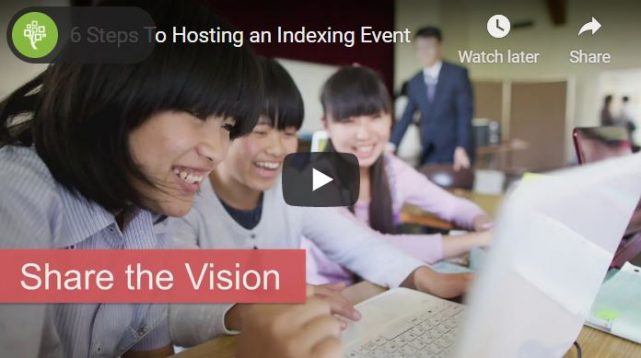
From the article “Six Steps to Hosting a Successful Indexing Event.”
Indexing events are a great tool for helping people get involved in temple and family history work. As we make family discoveries possible through indexing, we are inspired to gather information about our own ancestors and make eternal connections with them.
Planning a successful indexing event isn’t difficult, and each one should be tailored to your area’s needs and circumstances. But these general tips can help maximize your success. For other useful resources, see Host an Indexing Event.
Watch the video “6 Steps To Hosting an Indexing Event“:
Essential Tips for Success
- Seek support from priesthood leaders. If your bishop or stake president is excited about participating in the indexing event, ward and stake members will be too. Help priesthood leaders understand the benefits of the indexing event, and encourage them to invite members to participate. When priesthood leaders support indexing events, the events tend to be more successful.
- Set challenging, attainable goals. A specific goal will stretch, inspire, and motivate participants.
- Give the event a clear start and end date. Many Church members want to do family history work but lack motivation. Deadlines are great motivators. Setting a start and end time to your event will lead to greater participation.
- Focus on participation. While productivity goals are important, participation and the experience of the volunteers should come first.
- Celebrate success. To keep participants motivated and engaged, acknowledge and celebrate successes before, during, and after the event.
- Encourage temple attendance. Ultimately, family history efforts lead to the temple. Successful indexing events are planned with that goal in mind.
Learn more in the article “https://www.familysearch.org/blog/en/indexing-event-kit/.”
The post 6 Steps to Hosting a Successful Indexing Event first appeared on LDS365: Resources from the Church & Latter-day Saints worldwide.Continue reading at the original source →



